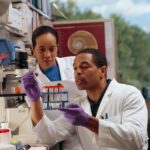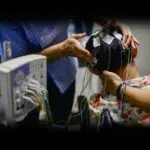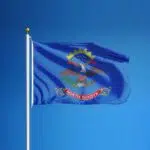Neurodiagnostic Week is observed every year during the third full week of April. This year, it takes place from April 19 to 25. This week highlights the concept of neurodiagnostics, the technologies, and the profession, to raise awareness about its groundbreaking achievements in the medical industry as well as encourage students to join the profession. Neurodiagnostics is the study of electrical activity in the brain and nervous system and is the discipline responsible for our E.E.G., E.P., and P.S.G. systems, to mention a few. This week was created and sponsored by one of the oldest and leading pioneers of the profession, the American Society of Electroneurodiagnostic Technologists (ASET).
History of Neurodiagnostic Week
Neurodiagnostics could be a difficult term to pronounce, and an even tougher concept to grasp when you come across it for the first time. That is why we are using Neurodiagnostic Week as an opportunity to tell you all you need to know about this unfamiliar, yet very important, medical topic. Neurodiagnosis is the study of electrical activity in the brain and nervous system, this includes the central and peripheral systems. This discipline has a lengthy history, and the profession has come a long way over the decades.
It all started in 1929 with the development of the first neurodiagnostic test, the electroencephalogram (E.E.G.). This test records the ongoing electrical activity of the brain and was set up by Hans Berger, a German psychiatrist. E.E.G. findings were used in diagnosing conditions like epilepsy, coma, and other neurological symptoms in children, and by the 1950s it was being used in major medical centers and also in private practice. This was the first step in the neurodiagnostic profession. After the breakthrough and popularity of the technology, like minds came together to form the first E.E.G. societies, the American Clinical Neurophysiology Society (A.C.N.S.) and the American Electroencephalographic Society (A.E.E.G.S.), which also became the foundation through which the American Society of Electroencephalographic Technologists (ASET) was founded.
Later in the century, evoked potential (E.P.) technologies entered the scene and were used to diagnose conditions like multiple sclerosis and other brain stem functionalities. Since then, there have been several technological advancements in the field, with the creation of technologies such as intraoperative neurophysiological monitoring (I.O.N.M.), polysomnography (P.S.G.), and nerve conduction studies (N.C.S.). Neurodiagnostic Week was established by ASET to raise awareness about neurodiagnostic technologies and the profession.
Neurodiagnostic Week timeline
Hans Berger invents the electroencephalogram (E.E.G.) procedure.
The American Clinical Neurophysiology Society (A.C.N.S.) and the American Electroencephalographic Society (A.E.E.G.S.) are formed.
The American Society of Electroencephalographic Technologists (ASET) is formed with help from the A.E.E.G.S. and Dr. Peter Kellaway.
George Duncan Dawson introduces the concept of evoked potentials (E.P.s).
Neurodiagnostic Week FAQs
Can I become a member of ASET?
The American Society of Electroencephalographic Technologists (ASET) is always open to new like-minded members. You can join a team of over 7,000 members by following the necessary procedures on their website.
Is National EEG Awareness Week the same as Neurodiagnostic Week?
Both holidays are the same thing. Neurodiagnostic Week was initially established as National EEG Awareness Week by ASET in 1984. Since then, it has been celebrated annually in the third full week of April.
When is the ASET annual conference this year?
This year, the American Society of Electroencephalographic Technologists (ASET) will hold its annual conference at the Galt House Hotel in Louisville, Kentucky, from August 4 to August 6. This two-day conference will be packed with activities and knowledge, and registration is now open for interested individuals.
Neurodiagnostic Week Activities
Show your support
This week is all about highlighting the important gift that is neurodiagnostics and the amazing technologies and professionals associated with it. The best way to do that is by showing your gratitude and support for the profession. You can do this by posting some valuable information on your social media platforms with the hashtag #NeurodiagnosticWeek or #NDWeek.
Look up courses
Another key ingredient in the creation of this week is to also encourage students and individuals to join the profession. So if you’re a student interested in joining the medical field, but still unsure of your specialization, take some time out this week to give neurodiagnostics a shot by doing some research or exploring courses. ASET also has online courses for you to enroll in. See if they are a good fit for you.
Attend the conference
Every year, ASET organizes an international conference in Louisville, Kentucky. This is a great opportunity to meet and mingle with like minds, as well as to expand your knowledge on the subject matter. Visit their website to secure your seat at the conference this year, and share the opportunity with interested individuals.
5 Facts About Neurodiagnostics Technologists
They are all-in-one
Neurodiagnostics technologists learn to perform all neurodiagnostic procedures, from E.E.G. assessments to intraoperative neuromonitoring.
They bring home the big bucks
The average annual salary for a neurodiagnostics technologist ranges from $40,000 to $70,000, depending on experience and expertise.
Theirs is among the important medical professions
N.D.T.s are at the forefront of medicine, diagnosing extreme conditions such as epilepsy, brain tumors, and strokes.
They pay attention to detail
N.D.T.s pay close attention to detail when making recordings and measurements to attach electrodes.
Learning doesn’t take too long
N.D.T. programs usually last between one to two years, depending on the courses and type of program.
Why We Love Neurodiagnostic Week
It raises awareness
The whole point of this week is to raise awareness about neurodiagnostics and to educate us all about its concepts, technologies, and the profession. It is an opportunity to learn something new and it reminds us of just how important this arm of medicine and science truly is.
It’s for the students
Another reason to love Neurodiagnostic Week is that one of its purposes is to inspire students about a new career path. It’s very normal to be unsure of what discipline to go in for when selecting a major before heading for college or university. This week sheds light on the neurodiagnostic profession and gives students a new educational path to explore.
It’s for professionals too
We are all about giving credit where it’s due, and this holiday allows us to do so. We are giving neurodiagnostic professionals accolades throughout the week, and encouraging you to join us in doing so.
Neurodiagnostic Week dates
| Year | Date | Day |
|---|---|---|
| 2024 | April 21–27 | Sunday–Saturday |
| 2025 | April 20–26 | Sunday–Saturday |
| 2026 | April 19–25 | Sunday–Saturday |
































